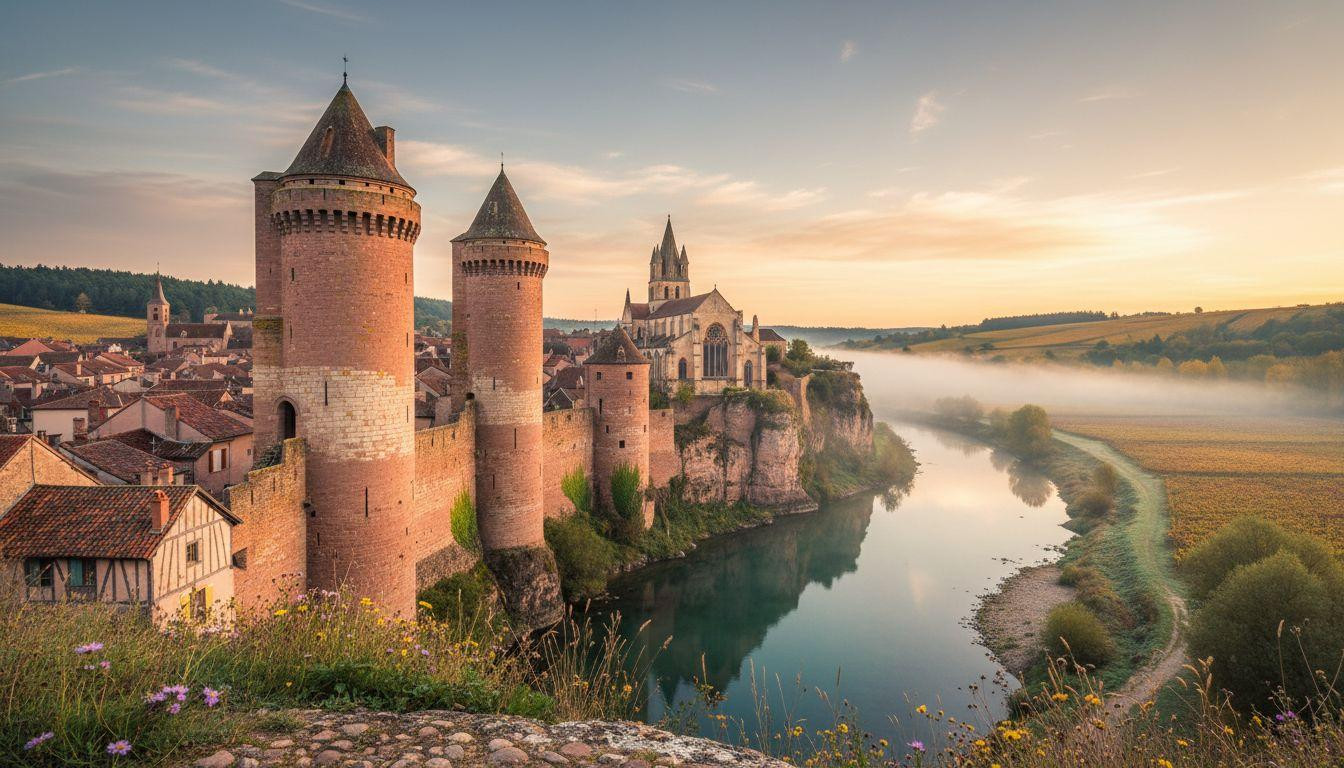Every golden hour guide sends photographers to Santorini’s crowded sunsets or Hallstatt’s overrun viewpoints. But the real magic happens in 14 overlooked European villages where morning mist, afternoon alpenglow, and evening reflections create photographer’s paradise without the crowds. These fairytale destinations offer perfect light conditions during specific daily windows, turning ordinary architecture into warm amber masterpieces through precise sun angles that occur only in these geographic sweet spots.
The science behind perfect village light
Light quality depends on three factors: elevation, water proximity, and stone composition. Alpine villages like Lauterbrunnen benefit from thin mountain air that intensifies alpenglow for 25-30 minutes longer than summer. Canal towns like Colmar create double exposure through reflections when afternoon sun hits half-timbered facades at 3:45 PM. Pink granite villages like Semur-en-Auxois literally glow during sunrise as iron oxide deposits warm to amber.
November 2025 offers ideal conditions. Tourist numbers drop 75-90% across all destinations while atmospheric clarity peaks. Morning fog adds dramatic layers that clear by 10 AM, revealing crisp mountain backdrops and mirror-calm water surfaces perfect for photography.
Northern European morning masters
Hallstatt, Austria delivers sunrise magic from 7:15-8:00 AM when lake reflections mirror pastel houses against Dachstein peaks. Tour boats don’t launch until 8:30 AM, creating 45 minutes of wake-free photography. November fog frequency reaches 65%, typically clearing by 9:30 AM for dramatic atmospheric layers.
Arctic extremes in Reine, Norway
At 68°N latitude, Reine offers 4.5 hours of blue hour during November. Arctic twilight lasts 3 hours 15 minutes, creating extended golden opportunities. Northern Lights appear 15-20 nights monthly. Red fishing huts (rorbuer) reflect perfectly in calm fjord waters between 1:30-5:00 PM.
Hidden gems in Eastern Europe
Spišská Sobota, Slovakia welcomes only 15-25 daily visitors versus thousands in Austrian Alps. Sunrise illuminates High Tatras peaks from 6:55-7:45 AM. Accommodation costs $50-70 nightly compared to $150-200 in comparable Alpine villages. The medieval square creates natural light box effects during dawn alpenglow.
Afternoon golden hour champions
Colmar, France transforms during 3:15-4:15 PM when low sun angle illuminates half-timbered houses in Petite Venice. Canal reflections work best between 2:30-4:00 PM when November water flow slows. Tour groups typically depart by 3:30 PM, leaving photographers free access to prime viewpoints.
Pink stone specialists
Albarracín, Spain glows amber from 4:00-4:45 PM when evening sun hits sandstone with iron oxide deposits. Elevation at 3,713 feet creates crisp atmospheric conditions. November brings 65% clear evenings with comfortable 41-54°F temperatures for extended shooting sessions. This medieval village where sunset turns limestone walls amber 328 feet above the Lot River offers similar pink stone magic in France’s Lot valley.
Swiss precision timing
Giornico, Switzerland benefits from Ticino’s 2,300+ annual sunshine hours versus 1,600 in northern Switzerland. South-facing valley position creates 20% more direct sunlight. Midday clarity peaks 11 AM-1 PM when granite reflects warm tones. Only 30-50 daily visitors compared to 300+ in famous Ticino destinations like Ascona.
Evening reflection masters
Spiez Castle aligns perfectly with November sunsets from 4:25-4:40 PM. Thunersee displays deep blue November colors due to low algae levels. Ferry schedules end by 5:30 PM, creating calm water for evening reflections. Eiger and Jungfrau peaks appear through clearing skies 40% of November days.
Saint-Ursanne offers Switzerland’s most intimate light experience. Medieval Doubs River bridge creates perfect reflections 3:30-4:00 PM. Daily visitor count stays 20-30 versus 98% fewer than tourist magnet Gruyères. This Swiss village where cable cars replace roads and 450 residents wake to mountain silence unchanged since 1912 provides similar alpine tranquility in the Valais region.
Planning your light-chasing adventure
November photography requires weather-sealed equipment and extra batteries as cold drains power 50% faster. Tripods with spiked feet handle wet cobblestones and morning frost. Austria and Switzerland require no photography permits for personal use. France and Germany charge $55-110 for commercial shoots but welcome personal photography freely.
18 European villages where medieval cobblestones and half-timbered houses survive through local tradition instead of tour groups provides additional architectural photography opportunities. Better than Swiss Alps, this Slovenian park has emerald rivers and mountain huts for half the cost offers budget alternatives for alpine photography.
Your questions about European fairytale villages known for their perfect light answered
What makes November ideal for village photography?
November delivers 75-90% fewer tourists while maintaining crisp atmospheric conditions. Morning fog creates dramatic layers that clear by 10 AM. Low sun angles extend golden hour duration and intensify alpenglow on mountain villages. Accommodation costs drop 40-60% below peak season rates.
Which villages offer the most reliable clear weather?
Mediterranean locations like Albarracín enjoy 65-70% clear November afternoons. Swiss Ticino region averages 45% sunny November days. Baltic locations like Kuldīga face 75% cloud cover but create dramatic lighting when clear. Alpine villages average 35-40% clear afternoons with exceptional clarity.
How do these villages compare to famous photography destinations?
Hallstatt receives 2,500 November visitors versus 10,000 July daily peaks. Colmar sees 300-400 November visitors versus 3,000 summer daily crowds. Reine welcomes 95% fewer tourists than comparable Norwegian destinations. Photography workshop rates cost 25% less during November off-season periods.
Morning mist rises from Semur-en-Auxois valley as first light touches pink granite towers. Seven medieval spires catch dawn alpenglow while Armançon River mirrors the awakening sky. These November moments happen quietly, authentically, without crowds or compromise.
